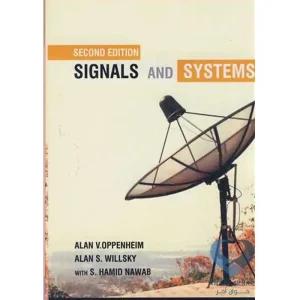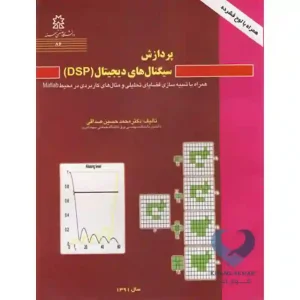درباره کتاب DISCRETE-TIME SIGNAL PROCESSING
کتاب DISCRETE-TIME SIGNAL PROCESSING تالیف RONALD SCHAFER و ALAN OPPENHEIM توسط انتشارات نوپردازان به چاپ رسیده است و دانشجویان رشته مهندسی برق به ویژه کنترل میتوانند این کتاب و سایر کتاب های مرتبط را از سایت خوان آخر تهیه نمایند.
نسخه سوم کتاب برای افرادی که سطح مقدماتی سیگنال ها و سیستم ها را دارند مناسب است و توسط پیشگامان برجسته DSP، نوشته شده است و متن کاملی از خواص سیستم های خطی گسسته زمان، فیلتر، نمونه برداری، و تجزیه و تحلیل فوریه زمان گسسته فراهم میکند.
بر مفاهیم عمومی و جهانی در پردازش سیگنال زمان گسسته تمرکز دارد، و آن را حیاتی و مرتبط با چالش های جدید ناشی در این زمینه میداند.
سیگنال گسسته، سیگنالی است که به ازای تمامی مقادیر در محور زمان رفتار پیوستهای ندارد.
پیشگفتار انگلیسی کتاب
This third edition of Discrete-Time Signal Processing is a descendent of our original textbook Digital Signal Processing published in 1975. That very successful text appeared at a time when the field was young and just beginning to develop rapidly. At that time the topic was taught only at the graduate level and at only a very few schools. Our 1975 text was designed for such courses. It is still in print and is still used successfully at a number of schools in the United States and internationally.
By the 1980’s, the pace of signal processing research, applications and implemen- tation technology made it clear that digital signal processing (DSP) would realize and exceed the potential that had been evident in the 1970’s. The burgeoning importance of DSP clearly justified a revision and updating of the original text. In organizing that revision, it was clear that so many changes had occurred both in the field and in the level and style with which the topic was taught, that it was most appropriate to develop a new textbook, strongly based on our original text, while keeping the original text in print. We titled the new book, published in 1989, Discrete-Time Signal Processing to emphasize that most of the DSP theory and design techniques discussed in the text apply to discrete-time systems in general, whether analog or digital.
In developing Discrete-Time Signal Processing we recognized that the basic principle of DSP were being commonly taught at the undergraduate level, sometimes even as part of a first course on discrete-time linear systems, but more often, at a more advanced level in third-year, fourth-year, or beginning graduate subjects. Therefore, it was appropriate to expand considerably the treatment of such topics as linear systems. sampling, multirate signal processing, applications, and spectral analysis. In addition, more examples were included to emphasize and illustrate important concepts. Consistent with the importance that we placed on well constructed examples and homework problems, that new text contained more than 400 problems.



















دیدگاهها
هیچ دیدگاهی برای این محصول نوشته نشده است.